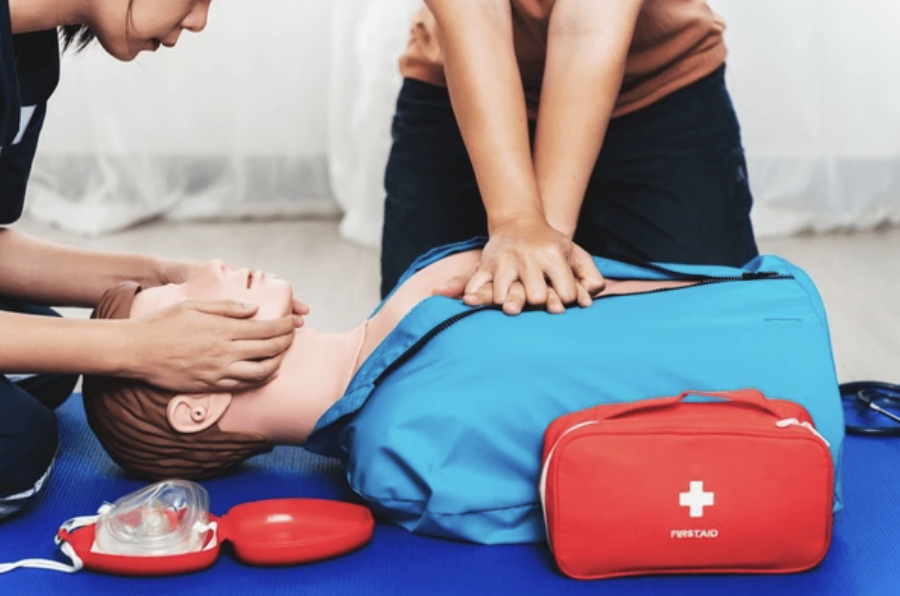Every day, unexpected emergencies occur—someone faints in a crowded space, a child takes a hard fall, or a colleague suffers a sudden medical episode. In these moments, the presence of a trained individual can transform the outcome. Many people choose first aid courses Sydney to gain practical lifesaving skills that prepare them to respond confidently in real emergencies. Far from being a skill reserved for medical professionals, first aid training is designed for everyone. Understanding its basics and why it matters can highlight just how valuable this training truly is.
An Introduction To First Aid Training
At its core, a first aid course is about learning how to provide immediate care until professional medical assistance arrives. It doesn’t require advanced medical knowledge or years of study. Instead, it focuses on simple, structured techniques that can be applied in real-life emergencies. The training is practical, easy to follow, and adaptable to a variety of scenarios.
By the end of the course, participants gain more than just knowledge—they gain the ability to step into action with clarity and purpose when it’s needed most.
Key Skills You’ll Learn
The majority of first aid courses cover a number of crucial topics, while the precise material may differ depending on the training provider:
- Cardiopulmonary Resuscitation (CPR): You’ll learn how to perform CPR on adults, children, and infants, ensuring oxygen continues to circulate in the body during cardiac arrest.
- Bleeding Control And Wound Care: The course explains how to stop bleeding, clean wounds, and apply bandages properly to prevent infection and stabilise injuries.
- Choking Response: Techniques for clearing a blocked airway, particularly in children, are a significant focus.
- Burn And Fracture Management: From cooling burns to immobilising broken bones, you’ll be taught ways to minimise further damage.
- Recognising Serious Conditions: Many courses include training on identifying the signs of heart attacks, strokes, seizures, and severe allergic reactions.
- Using Emergency Equipment: In some courses, you’ll also be introduced to using devices like automated external defibrillators (AEDs), which can restore normal heart rhythms.
Each of these skills is taught with simplicity in mind, making them accessible to people without medical backgrounds.
The Practical Benefits Of First Aid Training
The significance of a first aid course goes far beyond ticking a box for compliance or workplace requirements. It provides practical benefits that can be applied in everyday life.
For instance, parents often find these courses invaluable for dealing with children’s accidents at home or school. Employees gain the ability to respond to unexpected injuries in the workplace, which is particularly important in environments with machinery or physical labour. Even in social or public settings, having just one trained person on hand can drastically improve the outcome of an emergency.
Building Confidence In High-Stress Situations
Emergencies are stressful, and fear often leads to hesitation. A first aid course helps participants overcome this by teaching them a structured approach. Rather than panicking, trained individuals know the steps to take, from assessing the situation to calling for help and providing immediate care.
This confidence is empowering. Not only does it allow you to help others, but it also gives those around you peace of mind, knowing that someone is capable of handling a crisis effectively.
Why First Aid Knowledge Matters?
First aid knowledge has a ripple effect. It’s not just about saving lives, though that is undoubtedly the most critical outcome. It’s also about reducing the severity of injuries, shortening recovery times, and providing comfort to those who are hurt or unwell.
Moreover, first aid training creates safer communities and workplaces. When more people are trained, the collective ability to respond to emergencies improves dramatically. Everyone gains from the culture of safety and care that is fostered by this sense of shared duty.
Lifelong Value
The value of a first aid course extends throughout a person’s life. Skills learned during training are helpful at home, in the workplace, during travel, or even while participating in sports and recreational activities. While refresher courses may be recommended to keep knowledge sharp, the core skills remain with you and can be applied in countless situations.
It is this universal relevance that makes first aid training so important. It doesn’t matter where you live, what job you do, or how old you are—knowing how to provide first aid is a skill that benefits both you and those around you.
Conclusion
A first aid course is not just another certification; it is a life skill with universal application. By covering fundamental techniques such as CPR, wound care, and recognising medical emergencies, these courses prepare individuals to act quickly and effectively when it matters most. Beyond the technical skills, they build confidence, promote safety, and foster a culture of care in every environment.




